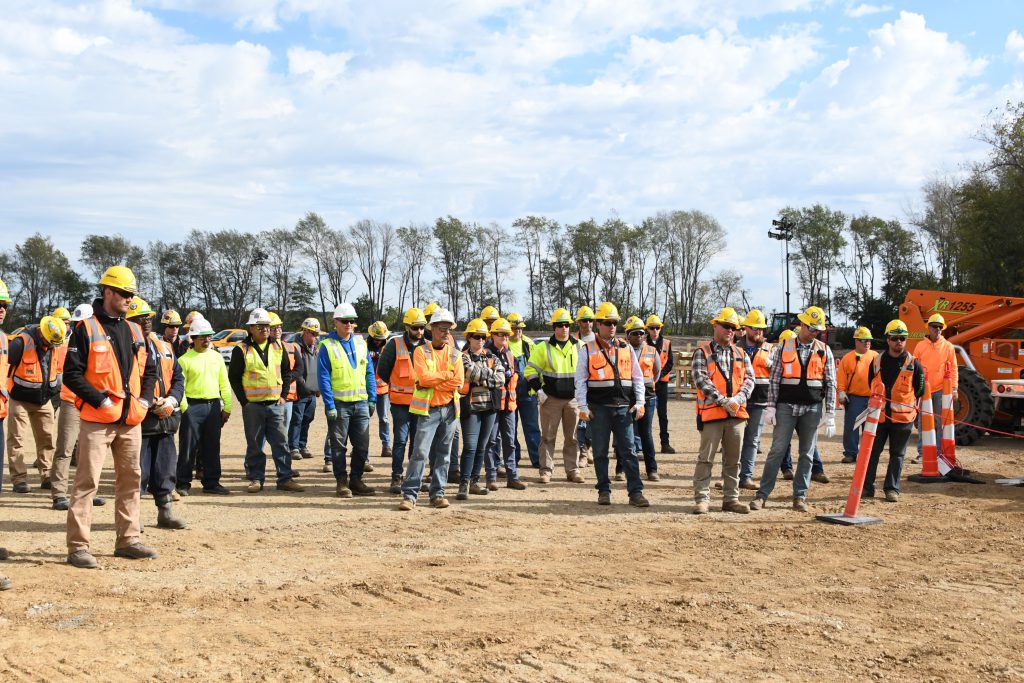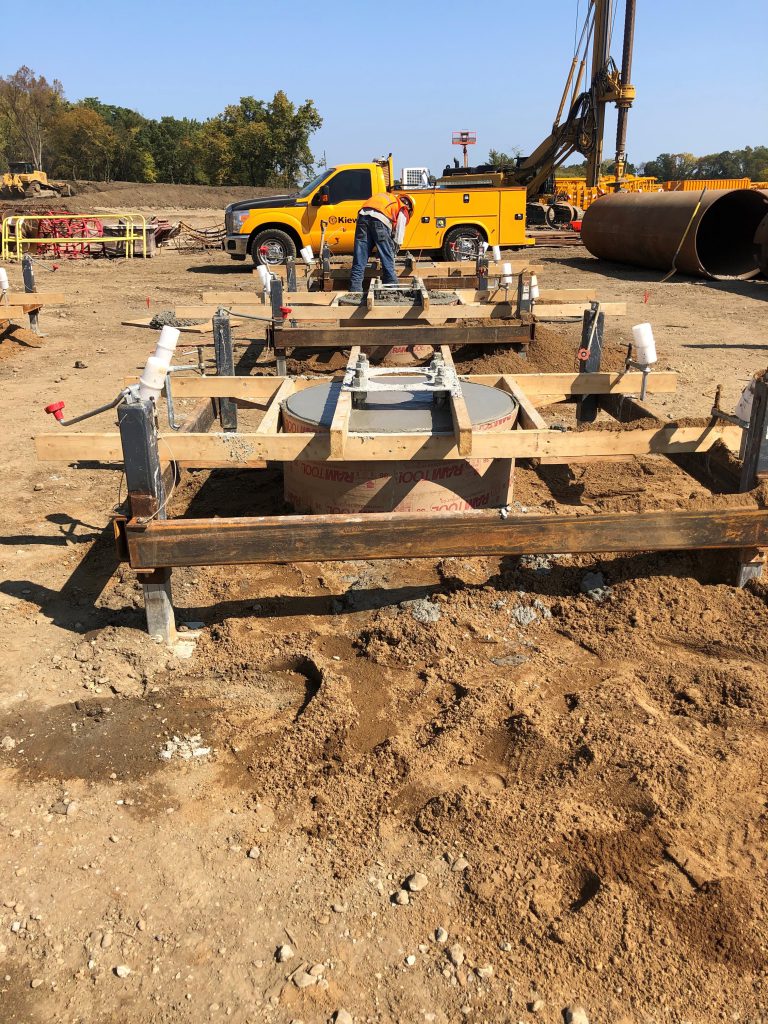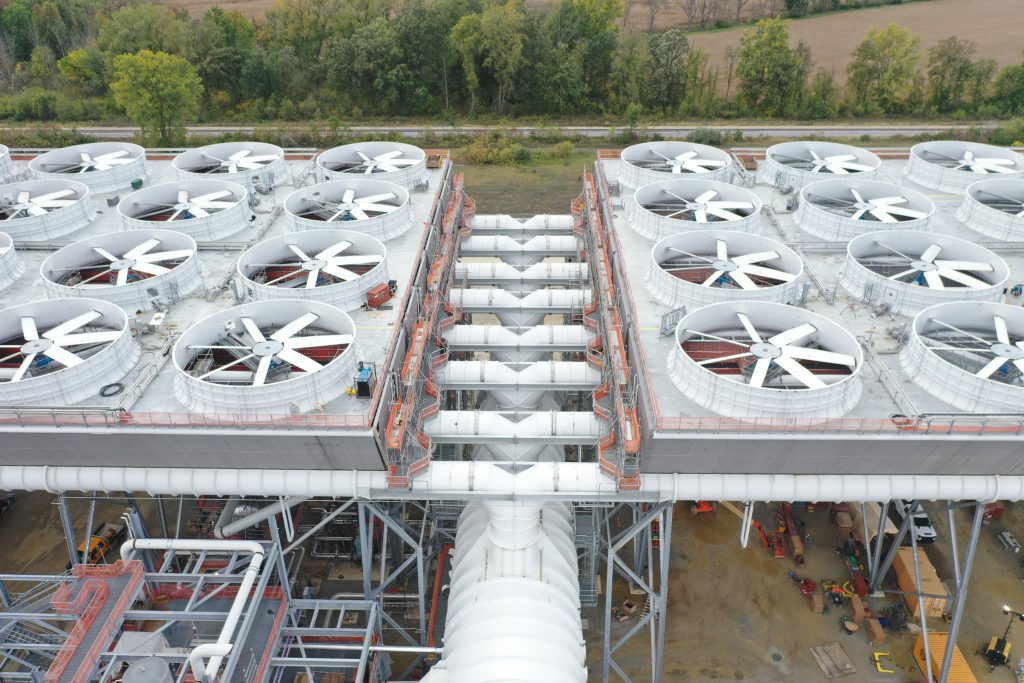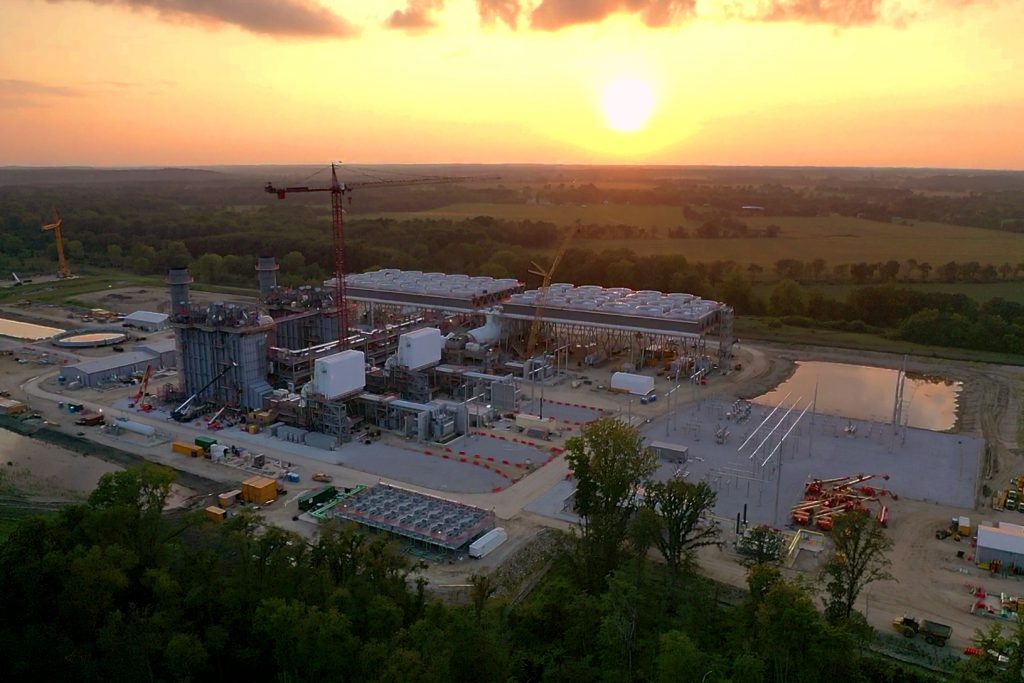With every job Kiewit takes on — like the Indeck Niles Energy Center in Niles, Michigan — success lies in looking at the big picture from new perspectives. This team has harnessed a special kind of power that’s helped develop innovative and safer ways of working.
Located near the Michigan border, just north of South Bend, Indiana, the town of Niles will soon be home to a 2-on-1 combined-cycle electric generation station. It will be one of the most efficient energy centers of its kind in the state.
Two gas turbines feed two heat recovery steam generators (HRSGs). The HRSGs use waste heat to produce steam, which is then sent to a steam turbine to generate additional electricity.
When it goes online in March, the 1,085 megawatt plant operated by Indeck Niles LLC will supply power to the greater Midwest area. About 650,000 homes and businesses will benefit from the plant’s efficient energy output.
The community will benefit, too: An estimated 21 high-paying permanent jobs will be added, and the center will generate millions of dollars in local tax revenue.
Moving the water around
When Kiewit began work in August 2019 at the brownfield site, a former railyard, there were plenty of challenges for the team to tackle.
One happened early in the process, said Project Manager Tyler Jeziorski.
“The water table is roughly 8 feet below grade, so all of the underground utilities, pipe and electrical duct banks were all in that water table. When you have contaminated soil, you can’t simply discharge water off the site.
“We had to essentially lower the water table locally and rotate it around the project while we installed the underground utilities and poured all the major foundations. To have adequate storage space to support these efforts, the team dug additional temporary retention ponds. It was a huge challenge for the job team to get that work done.”
The steam distribution duct for the 47-cell Induced Draft Air Cooled Condenser (ACC) is 31 feet in diameter at its largest point. At full load, the duct distributes 2 million pounds per hour of steam to be condensed back into water.
Looking beyond local
Another hurdle: finding workers to satisfy the baseline schedule and what was to come. For six months in 2021, the job employed 650 craft.
With shortages around the area, the team needed to look beyond local union halls to fulfill manpower numbers and keep the job on schedule.
Project Sponsor Brian Koller attributes success to word-of-mouth recruiting and staff and craft connections from previous projects.
“We got a lot of traction that way, just by people’s personal relationships. So word of mouth got to them, then they called their friends or coworkers, people they knew, and said ‘Hey, we’ve got a good job up here.’ I would say that’s a huge contributor to our success.”
Moving up
Internally, Kiewit was creating and training its own workforce, young engineers like Johnathan Rychly. He came to the Indeck Niles project as lead field engineer for the HRSG with a few years of design engineering and construction experience under his belt.
Rychly said he’s learned a lot about the business and operations. He’s had a front-row seat to both the technical and project control sides of the business and developed a broader understanding of project cost and schedule.
It’s been an invaluable training ground for the young staff. Among the group, 10 have moved up to leadership positions.
Rychly is now a general superintendent. On this job, he’s gained “a solid foundation” to take his career in new or different directions, he said.
“There’s not a set path here. Kiewit has a lot of open doors for whatever you want to do with your career to help the company.”
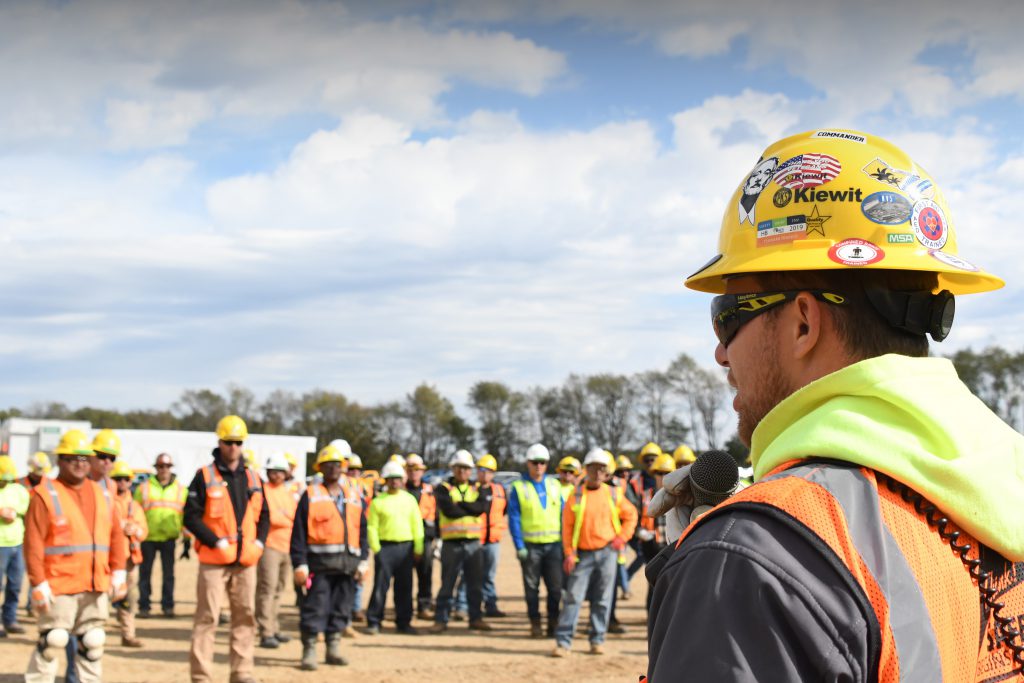
An ‘outstanding’ achievement
Safety always takes center stage on any Kiewit project. For the Indeck Niles Energy Center, the team is proud to showcase several important safety-related accomplishments.
One is reaching 1.5 million man-hours without a recordable incident. It’s a tremendous achievement, said Jeziorski.
“This business and this industry are inherently dangerous, so to accomplish that with 650 craft working day in and day out over the last year, it’s great for everybody.”
Another win involved the 47-cell Air Cooled Condenser (ACC), a part of the project that traditionally has required nearly 10,000 linear feet of overhead manual welding.
“It opens up a lot of opportunity for things such as eye injuries with some of the welding slag or particulate that you could get in your eye,” Jeziorski said. “And ergonomic strains and injuries can be common just with the position of the work.”
Area Manager Dan Rocole challenged the team to think outside the box to find a safer solution.
They came up with an innovative answer: an automated welding system with electronically controlled equipment that leaves little opportunity for defects or costly rework. Even better, the speed and accuracy of the equipment allows operations to be done three times faster than traditional techniques.
“I think it’s outstanding,” Rocole said. “We took a high-quantity, high-safety risk, repetitive process that goes on for probably 12 months of the job, and we’ve automated it and used the technology in our favor.”
